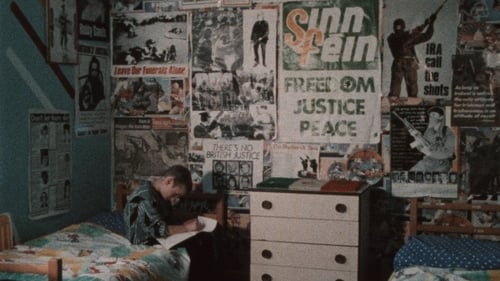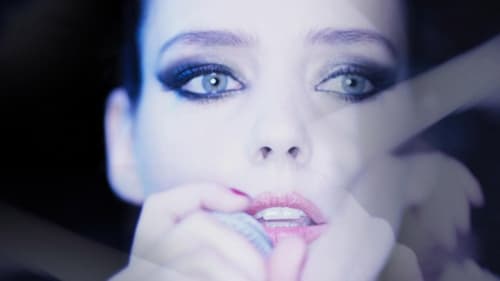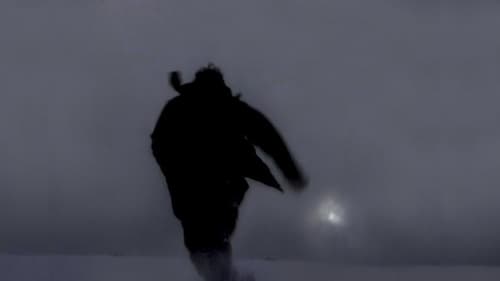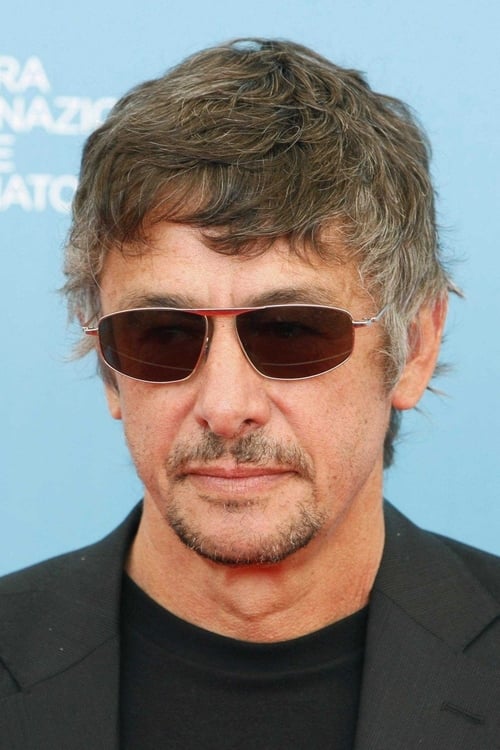Philippe Grandrieux
出生 : 1954-10-10, Saint-Étienne, France
略歴
Philippe Grandrieux (born 10 October, 1954; Saint-Étienne) is a French filmmaker. His work covers several cinematographic fields : TV experimentation, video art, research movie, film essay, documentary and museum exhibition.
His uncompromised vision of Art, leads him to push the boundaries of the cinematographic fields he is working on. Following the work of Teinosuke Kinugasa, Jean Epstein and Pier Paolo Pasolini who were constantly looking for and inventing new narrative forms that would only fit films, Grandrieux’s films, deriving from horror movies and experimental movies, give the viewer intense sensorial experiences. His goal is to make the viewer psychologically involved in his movies. Its films actually express a whole world of energies based on sensations and affects despite a linear narration and an iconography that relies on archetypes that refer to the archaic images of the fairy tale and the legend.

Director of Photography
A FICUNAM commission for four directors, Liminal seeks to play with poetic affinities between film and music. Moving across aesthetic and generational differences, the film-makers explore this relationship through four distinct stories as to context and imaginary.

Producer
A FICUNAM commission for four directors, Liminal seeks to play with poetic affinities between film and music. Moving across aesthetic and generational differences, the film-makers explore this relationship through four distinct stories as to context and imaginary.

Director
Philippe Grandrieux evokes the obsessive relationship between two women whose existence is kept by a lugubrious voice and by Alan Vega’s and Marc Hurtado’s famous Saturn Drive Duplex.

Editor
A FICUNAM commission for four directors, Liminal seeks to play with poetic affinities between film and music. Moving across aesthetic and generational differences, the film-makers explore this relationship through four distinct stories as to context and imaginary.

Director
A FICUNAM commission for four directors, Liminal seeks to play with poetic affinities between film and music. Moving across aesthetic and generational differences, the film-makers explore this relationship through four distinct stories as to context and imaginary.

Director
An installation presented on 11 screens featuring nude human figures engaged in cathartic performance.

Executive Producer
An Irish filmmaker grapples with the legacy of his estranged father, the late documentarian Arthur MacCaig, through MacCaig's decades-spanning archive of the conflict in Northern Ireland. Drawing on over 30 years of unique and never-seen-before footage, 'The Image You Missed' is an experimental essay film that weaves together a history of the Northern Irish 'Troubles' with the story of a son's search for his father. In the process, the film creates a candid encounter between two filmmakers born into different political moments, revealing their contrasting experiences of Irish nationalism, the role of images in social struggle, and the competing claims of personal and political responsibility.

Editor
Unrest is the third movement of a triptych by Philippe Grandrieux whose common thread is anxiety. A body as a return from the depths of time, an archaic body that we do not know and which nevertheless continues to project in us its shadow, its anxiety.

Director of Photography
Unrest is the third movement of a triptych by Philippe Grandrieux whose common thread is anxiety. A body as a return from the depths of time, an archaic body that we do not know and which nevertheless continues to project in us its shadow, its anxiety.

Screenplay
Unrest is the third movement of a triptych by Philippe Grandrieux whose common thread is anxiety. A body as a return from the depths of time, an archaic body that we do not know and which nevertheless continues to project in us its shadow, its anxiety.

Sound Designer
Unrest is the third movement of a triptych by Philippe Grandrieux whose common thread is anxiety. A body as a return from the depths of time, an archaic body that we do not know and which nevertheless continues to project in us its shadow, its anxiety.

Director
Unrest is the third movement of a triptych by Philippe Grandrieux whose common thread is anxiety. A body as a return from the depths of time, an archaic body that we do not know and which nevertheless continues to project in us its shadow, its anxiety.

Camera Operator
We enter the film like into a dream. Paris. Lenz looks for Madeleine who has mysteriously disappeared. He encounters Hélène, a young woman bewitched by her self-destructive impulses. A crazy love develops between them. Louis and Léna, devoured by their jealousy, lead Lenz to follow, against his better wishes, Hélène into the subterranean world of a dark sexual exploitation network. Although lost, lost from the first, love is what saves us.

Screenplay
We enter the film like into a dream. Paris. Lenz looks for Madeleine who has mysteriously disappeared. He encounters Hélène, a young woman bewitched by her self-destructive impulses. A crazy love develops between them. Louis and Léna, devoured by their jealousy, lead Lenz to follow, against his better wishes, Hélène into the subterranean world of a dark sexual exploitation network. Although lost, lost from the first, love is what saves us.

Director
We enter the film like into a dream. Paris. Lenz looks for Madeleine who has mysteriously disappeared. He encounters Hélène, a young woman bewitched by her self-destructive impulses. A crazy love develops between them. Louis and Léna, devoured by their jealousy, lead Lenz to follow, against his better wishes, Hélène into the subterranean world of a dark sexual exploitation network. Although lost, lost from the first, love is what saves us.

Sound Designer
In the second part of the trilogy on anxiety (in continuation of White Epilepsy), the only light source that reflects on the screen is the naked human body. Its surface, full of bones and muscles, flexes and vibrates in a frantic rhythm. The livelier the reflection, the deeper a viewer feels his/her mortality, as he recognizes between the convulsions the forces he/she cannot control.

Editor
In the second part of the trilogy on anxiety (in continuation of White Epilepsy), the only light source that reflects on the screen is the naked human body. Its surface, full of bones and muscles, flexes and vibrates in a frantic rhythm. The livelier the reflection, the deeper a viewer feels his/her mortality, as he recognizes between the convulsions the forces he/she cannot control.

Director of Photography
In the second part of the trilogy on anxiety (in continuation of White Epilepsy), the only light source that reflects on the screen is the naked human body. Its surface, full of bones and muscles, flexes and vibrates in a frantic rhythm. The livelier the reflection, the deeper a viewer feels his/her mortality, as he recognizes between the convulsions the forces he/she cannot control.

Screenplay
In the second part of the trilogy on anxiety (in continuation of White Epilepsy), the only light source that reflects on the screen is the naked human body. Its surface, full of bones and muscles, flexes and vibrates in a frantic rhythm. The livelier the reflection, the deeper a viewer feels his/her mortality, as he recognizes between the convulsions the forces he/she cannot control.

Director
In the second part of the trilogy on anxiety (in continuation of White Epilepsy), the only light source that reflects on the screen is the naked human body. Its surface, full of bones and muscles, flexes and vibrates in a frantic rhythm. The livelier the reflection, the deeper a viewer feels his/her mortality, as he recognizes between the convulsions the forces he/she cannot control.

Director
Where do images come from? This disturbing and essential question is posed by Philippe Grandrieux, and he already imposed it on himself the start, via Sombre (1999) up to the portrait recently devoted to Masao Adachi (FID 2011). From where, then? Maybe from the depths behind our eyes, ungraspable visions, night in suspension, promise of the end of an eclipse, between dream and nightmare. This is the start (and in truth the programme) of White Epilepsy. In a darkness barely broken by light, a mass advances: a nude back, in a long shot entirely centred on the shoulders.

Sound Designer
The first in a planned series of films about radical filmmakers by film critic Nicole Brenez and filmmaker Philippe Grandrieux, It May Be That Beauty Has Strengthened Our Resolve is a portrait of Masao Adachi, who emerged during the Japanese New Wave of the 1960s as a screenwriter for Nagisa Oshima and Koji Wakamatsu, and directed a series of avant-garde films that grafted radical politics to the sexploitation genre. A 1971 visit to a Popular Front for the Liberation of Palestine (PFLP) training camp while on the way back from Cannes resulted in Adachi's most infamous film, the agit-prop documentary Red Army/PFLP: Declaration of World War, which he co-directed with Wakamatsu. Soon after, Adachi joined a splinter cell of the Japanese Red Army in Lebanon, where he stayed from 1974 until he was deported to Japan in 1997 to serve time for passport violations.

Editor
The first in a planned series of films about radical filmmakers by film critic Nicole Brenez and filmmaker Philippe Grandrieux, It May Be That Beauty Has Strengthened Our Resolve is a portrait of Masao Adachi, who emerged during the Japanese New Wave of the 1960s as a screenwriter for Nagisa Oshima and Koji Wakamatsu, and directed a series of avant-garde films that grafted radical politics to the sexploitation genre. A 1971 visit to a Popular Front for the Liberation of Palestine (PFLP) training camp while on the way back from Cannes resulted in Adachi's most infamous film, the agit-prop documentary Red Army/PFLP: Declaration of World War, which he co-directed with Wakamatsu. Soon after, Adachi joined a splinter cell of the Japanese Red Army in Lebanon, where he stayed from 1974 until he was deported to Japan in 1997 to serve time for passport violations.

Director of Photography
The first in a planned series of films about radical filmmakers by film critic Nicole Brenez and filmmaker Philippe Grandrieux, It May Be That Beauty Has Strengthened Our Resolve is a portrait of Masao Adachi, who emerged during the Japanese New Wave of the 1960s as a screenwriter for Nagisa Oshima and Koji Wakamatsu, and directed a series of avant-garde films that grafted radical politics to the sexploitation genre. A 1971 visit to a Popular Front for the Liberation of Palestine (PFLP) training camp while on the way back from Cannes resulted in Adachi's most infamous film, the agit-prop documentary Red Army/PFLP: Declaration of World War, which he co-directed with Wakamatsu. Soon after, Adachi joined a splinter cell of the Japanese Red Army in Lebanon, where he stayed from 1974 until he was deported to Japan in 1997 to serve time for passport violations.

Director
The first in a planned series of films about radical filmmakers by film critic Nicole Brenez and filmmaker Philippe Grandrieux, It May Be That Beauty Has Strengthened Our Resolve is a portrait of Masao Adachi, who emerged during the Japanese New Wave of the 1960s as a screenwriter for Nagisa Oshima and Koji Wakamatsu, and directed a series of avant-garde films that grafted radical politics to the sexploitation genre. A 1971 visit to a Popular Front for the Liberation of Palestine (PFLP) training camp while on the way back from Cannes resulted in Adachi's most infamous film, the agit-prop documentary Red Army/PFLP: Declaration of World War, which he co-directed with Wakamatsu. Soon after, Adachi joined a splinter cell of the Japanese Red Army in Lebanon, where he stayed from 1974 until he was deported to Japan in 1997 to serve time for passport violations.

Director of Photography
The action unfolds in a country about which we know nothing, a land of snow and forests, somewhere in the North. A family lives in an isolated house near a lake. Alexi, a young, pure-hearted man, is a woodcutter. Occasionally suffering from epileptic seizures and overcome by an ecstatic state, he is one with the nature around him. Alexi is very close to his younger sister, Hege. Their blind mother, father, and younger brother, silently observe this uncontrollable love. One day a stranger arrives, a young man slightly older than Alexi.

Writer
The action unfolds in a country about which we know nothing, a land of snow and forests, somewhere in the North. A family lives in an isolated house near a lake. Alexi, a young, pure-hearted man, is a woodcutter. Occasionally suffering from epileptic seizures and overcome by an ecstatic state, he is one with the nature around him. Alexi is very close to his younger sister, Hege. Their blind mother, father, and younger brother, silently observe this uncontrollable love. One day a stranger arrives, a young man slightly older than Alexi.

Director
The action unfolds in a country about which we know nothing, a land of snow and forests, somewhere in the North. A family lives in an isolated house near a lake. Alexi, a young, pure-hearted man, is a woodcutter. Occasionally suffering from epileptic seizures and overcome by an ecstatic state, he is one with the nature around him. Alexi is very close to his younger sister, Hege. Their blind mother, father, and younger brother, silently observe this uncontrollable love. One day a stranger arrives, a young man slightly older than Alexi.

Director
Inspired by the dominant motif of the novel by the great Austrian writer Adalbert Stifter, "L’Arrière-saison" is a diptych about roses.

Director

Director

Writer
A young American falls obsessively in love with a mysterious courtesan named Melania against the backdrop of a dilapidated Eastern European landscape.

Director
A young American falls obsessively in love with a mysterious courtesan named Melania against the backdrop of a dilapidated Eastern European landscape.

Writer
A serial killer stalks a woman he befriended after her car broke down.

Director
A serial killer stalks a woman he befriended after her car broke down.

Himself
A week after the Dayton accords, Phillipe Grandrieux visits Sarajevo accompanied by Sada, a Bosnian who is returning home after four years of exile.

Writer
A week after the Dayton accords, Phillipe Grandrieux visits Sarajevo accompanied by Sada, a Bosnian who is returning home after four years of exile.

Director
A week after the Dayton accords, Phillipe Grandrieux visits Sarajevo accompanied by Sada, a Bosnian who is returning home after four years of exile.

Director
Portrait made for the magazine Brut.

Director
Portrait of a popular game in Brazil

Director

Director

Director

Director

Director of Photography
Les équilibristes, a film by Nico Papatakis with Michel Piccoli, inspired by Jean Genet, was broadcast in two parts on October 11 and 18, 1991, on the Sept. It was on this occasion that Philippe Grandrieux directed this short film for the Seven antenna, consisting of an interview with Nico Papatakis and the reading of excerpts from Jean Genet's text, “The Tightrope walker”, read by the actress Ann-Gisel Glass.

Director
Les équilibristes, a film by Nico Papatakis with Michel Piccoli, inspired by Jean Genet, was broadcast in two parts on October 11 and 18, 1991, on the Sept. It was on this occasion that Philippe Grandrieux directed this short film for the Seven antenna, consisting of an interview with Nico Papatakis and the reading of excerpts from Jean Genet's text, “The Tightrope walker”, read by the actress Ann-Gisel Glass.

Director
Third part of an experimental television program led by Grandrieux questionning TV flux aesthetic, this film focuses on a single interview with Jean-Louis Schefer who delivers his hypothesis on man-made images of itself.

Director
For a series of programs made for TV Fnac, Philippe Grandrieux meets different people who tell us, each in their own point of view, a story of images. After Paul Virilio (The World is an image) and before Jean-Louis Schaeffet, Le Trou noir (AKA The Black Hole) gives us the enlightened reflections of psychanalyst Juan David Nasio about real and reality.

Director

Director

Director

Director

First Assistant Director
Jim is a small child who lives in an inn run by his parents. The arrival of a strange captain to the Island they live will trouble his existence and tip him into an universe of adventures.

Director

Director

Director
Extract from the program "Juste une image" produced by Thierry Garrel and directed by Philippe Grandrieux.

Director

Director
A handheld video camera explores image-surfaces as a visual collective unconscious: a TV screen, Polaroids, photos. A conceptually and formally compelling film about the idea of change, the loss of a revolution, the defying memory of the 70s decade.

Director
Commissioned for the French television series Regards Entendus, La peinture cubiste is a multilayered, elusive investigation of the perception of reality and representation through cinema, painting and video. Unfolding as an evocative, implied fictional narrative, this work was suggested by a Jean Paulhan text in which a man experiences and perceives everyday life as though in the multifaceted space of a Cubist painting. Alternating between film and video, Kuntzel and Grandrieux explore physical and psychical perception, constructing an analogy between the way video transforms conventional filmic representation and the way Cubism fractured the perspectival codes of classical pictorial space. Shifting between abstraction and materiality, the real and the imaginary, this work suggests passages between painting, cinema and video.

Director

Director












